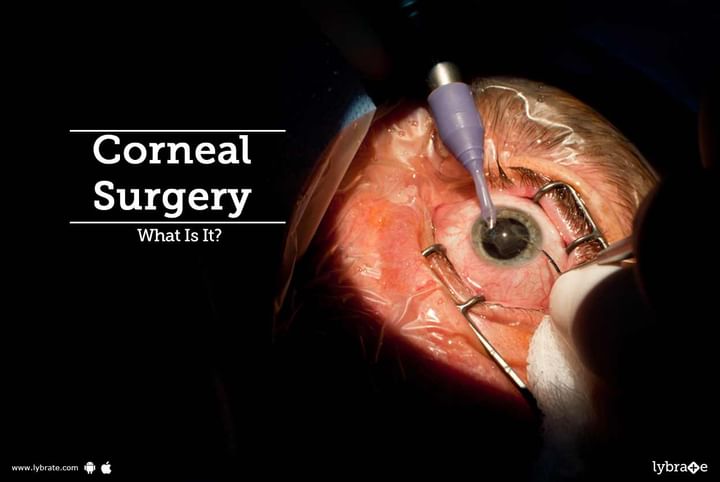Corneal Surgery - What Is It?
The cornea refers to the dome-like structure visible at the front of the eye. This is the outermost layer of the eye. The cornea protects the eye against germs, dirt and other harmful particles and helps focus light coming into the eye onto the retina to create an image. It also acts as a filter against UV radiation produced by the sun. In the case of injuries to the cornea due to scarring or eye diseases a corneal transplant may be advised. This is also known as keratoplasty.
The first step for a corneal transplant is to add the patient’s name to the transplant list at the local eye bank. A transplant can only be performed after a donor's eye is made available. The surgery is usually performed as an outpatient procedure and takes a maximum of 2 hours.
Local or general anaesthesia may be used for this procedure depending on the patient’s age, overall health and personal preference. A lid speculum is then used to keep the eyelids open through the surgery. A circular section of the injured cornea is then removed using a surgical tool or a laser beam. A matching section from the donor cornea is then used to replace the removed section and stitched into place. These stitches usually stay in place for a year after the surgery.
The healing of the cornea is a slow process and hence to prevent any injuries to the eye, a protective shield is usually worn over the eye for a few months. Patients may experience mild discomfort and blurred vision for the first few months after surgery. Steroid eye drops may also be prescribed to help the body accept the transplant and control infections. These eye drops will need to be used for up to a year after the surgery. As the cornea heals, the patient’s vision will improve. The results of a corneal transplant are said to have a life of about 10 years. However, this depends on the root cause of the problem.
Corneal transplants have a very high success rate but in rare cases, the eye may reject the transplant. Glaucoma and corneal swelling caused by an earlier cataract surgery can increase this risk. However, if this rejection is detected early enough, the process can be reversed. Some signs to look out for that may indicate that your body is rejecting the transplant are increased sensitivity to light, redness, pain and decreased vision.
In case you have a concern or query you can always consult an expert & get answers to your questions!



+1.svg)
